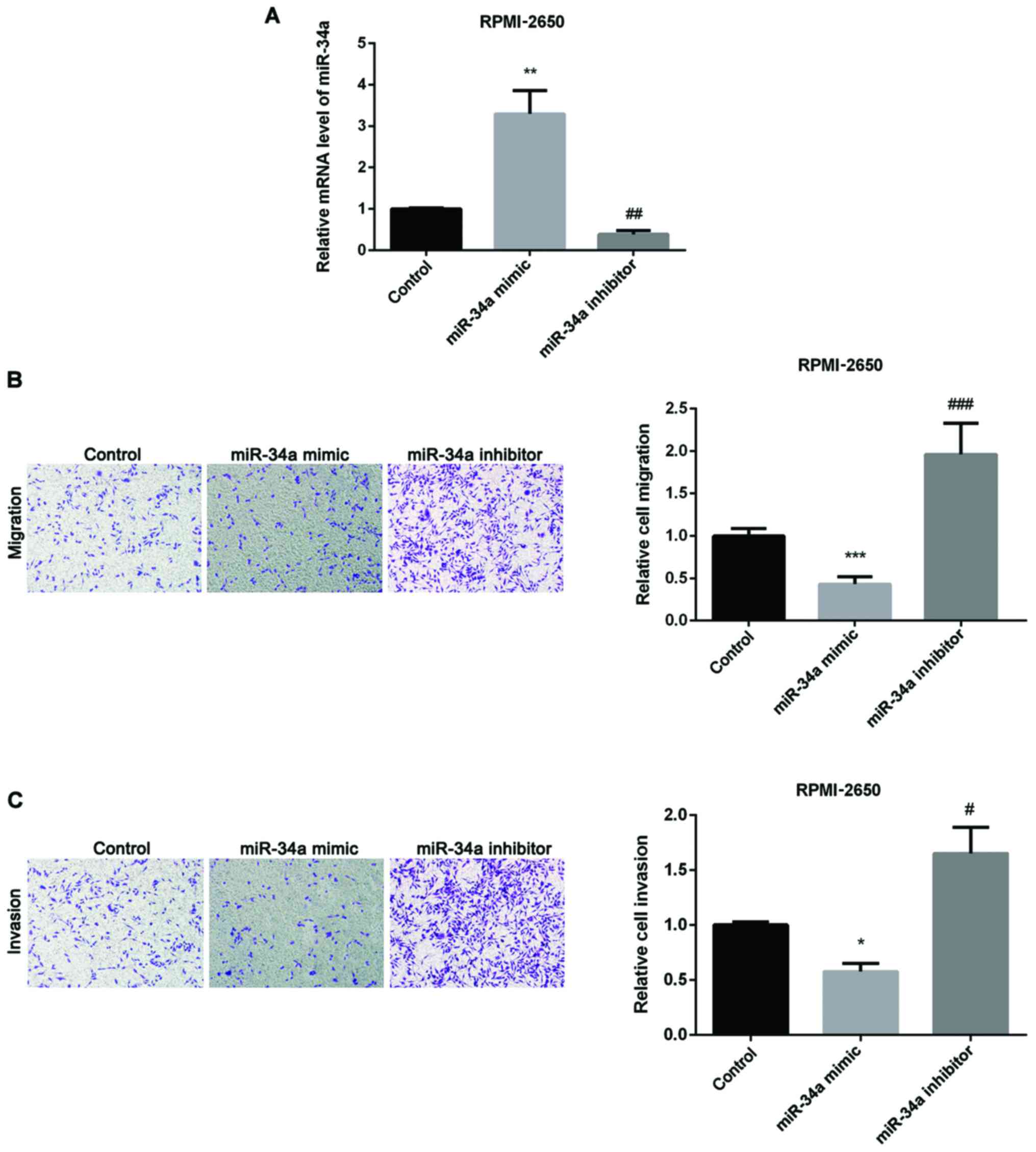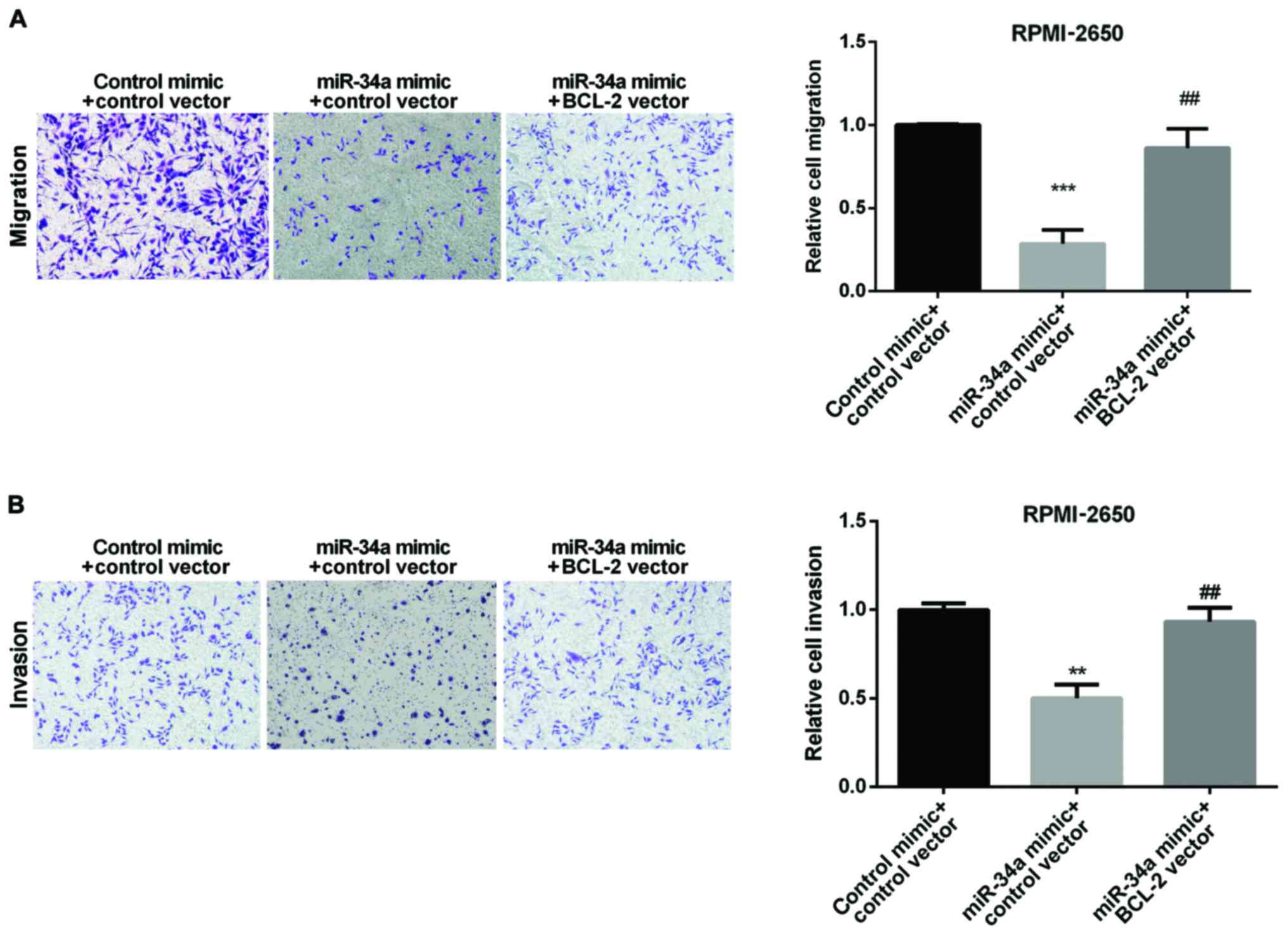|
1
|
Ansa B, Goodman M, Ward K, Kono SA,
Owonikoko TK, Higgins K, Beitler JJ, Grist W, Wadsworth T, El-Deiry
M, et al: Paranasal sinus squamous cell carcinoma incidence and
survival based on Surveillance, Epidemiology, and End Results data,
1973 to 2009. Cancer. 119:2602–2610. 2013. View Article : Google Scholar : PubMed/NCBI
|
|
2
|
Turner JH and Reh DD: Incidence and
survival in patients with sinonasal cancer: A historical analysis
of population-based data. Head Neck. 34:877–885. 2012. View Article : Google Scholar : PubMed/NCBI
|
|
3
|
Bonzini M, Battaglia P, Parassoni D, Casa
M, Facchinetti N, Turri-Zanoni M, Borchini R, Castelnuovo P and
Ferrario MM: Prevalence of occupational hazards in patients with
different types of epithelial sinonasal cancers. Rhinology.
51:31–36. 2013. View Article : Google Scholar : PubMed/NCBI
|
|
4
|
Sanghvi S, Khan MN, Patel NR, Yeldandi S,
Baredes S and Eloy JA: Epidemiology of sinonasal squamous cell
carcinoma: A comprehensive analysis of 4994 patients. Laryngoscope.
124:76–83. 2014. View Article : Google Scholar : PubMed/NCBI
|
|
5
|
Dulguerov P and Allal AS: Nasal and
paranasal sinus carcinoma: How can we continue to make progress?
Curr Opin Otolaryngol Head Neck Surg. 14:67–72. 2006.PubMed/NCBI
|
|
6
|
Youlden DR, Cramb SM, Peters S, Porceddu
SV, Møller H, Fritschi L and Baade PD: International comparisons of
the incidence and mortality of sinonasal cancer. Cancer Epidemiol.
37:770–779. 2013. View Article : Google Scholar : PubMed/NCBI
|
|
7
|
Scaria V, Hariharan M, Pillai B, Maiti S
and Brahmachari SK: Host-virus genome interactions: Macro roles for
microRNAs. Cell Microbiol. 9:2784–2794. 2007. View Article : Google Scholar : PubMed/NCBI
|
|
8
|
Zhu W, Shan X, Wang T, Shu Y and Liu P:
miR-181b modulates multidrug resistance by targeting BCL2 in human
cancer cell lines. Int J Cancer. 127:2520–2529. 2010. View Article : Google Scholar : PubMed/NCBI
|
|
9
|
Yang H, Kong W, He L, Zhao JJ, O'Donnell
JD, Wang J, Wenham RM, Coppola D, Kruk PA, Nicosia SV, et al:
MicroRNA expression profiling in human ovarian cancer: miR-214
induces cell survival and cisplatin resistance by targeting PTEN.
Cancer Res. 68:425–433. 2008. View Article : Google Scholar : PubMed/NCBI
|
|
10
|
Pogribny IP, Filkowski JN, Tryndyak VP,
Golubov A, Shpyleva SI and Kovalchuk O: Alterations of microRNAs
and their targets are associated with acquired resistance of MCF-7
breast cancer cells to cisplatin. Int J Cancer. 127:1785–1794.
2010. View Article : Google Scholar : PubMed/NCBI
|
|
11
|
Hamano R, Miyata H, Yamasaki M, Kurokawa
Y, Hara J, Moon JH, Nakajima K, Takiguchi S, Fujiwara Y, Mori M, et
al: Overexpression of miR-200c induces chemoresistance in
esophageal cancers mediated through activation of the Akt signaling
pathway. Clin Cancer Res. 17:3029–3038. 2011. View Article : Google Scholar : PubMed/NCBI
|
|
12
|
Cui XB, Peng H, Li RR, Mu JQ, Yang L, Li
N, Liu CX, Hu JM, Li SG, Wei Y, et al: MicroRNA-34a functions as a
tumor suppressor by directly targeting oncogenic PLCE1 in Kazakh
esophageal squamous cell carcinoma. Oncotarget. 8:92454–92469.
2017. View Article : Google Scholar : PubMed/NCBI
|
|
13
|
Zhou Y, Ding BZ, Lin YP and Wang HB:
miR-34a, as a suppressor, enhance the susceptibility of gastric
cancer cell to luteolin by directly targeting HK1. Gene. 644:56–65.
2018. View Article : Google Scholar : PubMed/NCBI
|
|
14
|
Ding N, Wu H, Tao T and Peng E: NEAT1
regulates cell proliferation and apoptosis of ovarian cancer by
miR-34a-5p/BCL2. OncoTargets Ther. 10:4905–4915. 2017. View Article : Google Scholar
|
|
15
|
Wang X, Xie Y and Wang J: Overexpression
of microRNA-34a-5p inhibits proliferation and promotes apoptosis of
human cervical cancer cells by downregulation of Bcl-2. Oncol Res.
Aug 30–2017.(Epub ahead of print). View Article : Google Scholar
|
|
16
|
Zhang X, Ai F, Li X, Tian L, Wang X, Shen
S and Liu F: MicroRNA-34a suppresses colorectal cancer metastasis
by regulating Notch signaling. Oncol Lett. 14:2325–2333. 2017.
View Article : Google Scholar : PubMed/NCBI
|
|
17
|
Li Y, Zhang H, Dong Y, Fan Y, Li Y, Zhao
C, Wang C, Liu J, Li X, Dong M, et al: miR-146b-5p functions as a
suppressor miRNA and prognosis predictor in non-small cell lung
cancer. J Cancer. 8:1704–1716. 2017. View Article : Google Scholar : PubMed/NCBI
|
|
18
|
Ogawa T, Saiki Y, Shiga K, Chen N,
Fukushige S, Sunamura M, Nagase H, Hashimoto S, Matsuura K, Saijo
S, et al: miR-34a is downregulated in cis-diamminedichloroplatinum
treated sinonasal squamous cell carcinoma patients with poor
prognosis. Cancer Sci. 103:1737–1743. 2012. View Article : Google Scholar : PubMed/NCBI
|
|
19
|
Xiong S, Zheng Y, Jiang P, Liu R, Liu X
and Chu Y: MicroRNA-7 inhibits the growth of human non-small cell
lung cancer A549 cells through targeting BCL-2. Int J Biol Sci.
7:805–814. 2011. View Article : Google Scholar : PubMed/NCBI
|
|
20
|
Feng SD, Mao Z, Liu C, Nie YS, Sun B, Guo
M and Su C: Simultaneous overexpression of miR-126 and miR-34a
induces a superior antitumor efficacy in pancreatic adenocarcinoma.
OncoTargets Ther. 10:5591–5604. 2017. View Article : Google Scholar
|
|
21
|
Wu J, Sun Z, Sun H and Li Y: MicroRNA 27a
promotes tumorigenesis via targeting AKT in triple negative breast
cancer. Mol Med Rep. 17:562–570. 2018.PubMed/NCBI
|
|
22
|
Liao A, Tan G, Chen L, Zhou W and Hu H:
RASSF1A inhibits gastric cancer cell proliferation by miR-711-
mediated downregulation of CDK4 expression. Oncotarget.
7:5842–5851. 2016. View Article : Google Scholar : PubMed/NCBI
|
|
23
|
Gu L, Zhang J, Shi M and Peng C: The
effects of miRNA-1180 on suppression of pancreatic cancer. Am J
Transl Res. 9:2798–2806. 2017.PubMed/NCBI
|
|
24
|
Lu H, Wang C, Hao L, Yin G and Hao R: The
expression and significance of programmed cell death 5 and B-cell
lymphoma/leukemia-2 in sinonasal squamous cell carcinoma. Lin Chung
Er Bi Yan Hou Tou Jing Wai Ke Za Zhi. 28:1301–1304. 2014.(In
Chinese). PubMed/NCBI
|
|
25
|
Katori H, Nozawa A and Tsukuda M: Cell
proliferation, apoptosis, and apoptosis inhibition in malignant
transformation of sinonasal inverted papilloma. Acta Otolaryngol.
127:540–546. 2007. View Article : Google Scholar : PubMed/NCBI
|
|
26
|
Cao W, Yang W, Fan R, Li H, Jiang J, Geng
M, Jin Y and Wu Y: miR-34a regulates cisplatin-induce gastric
cancer cell death by modulating PI3K/AKT/survivin pathway. Tumour
Biol. 35:1287–1295. 2014. View Article : Google Scholar : PubMed/NCBI
|
|
27
|
Cao W, Fan R, Wang L, Cheng S, Li H, Jiang
J, Geng M, Jin Y and Wu Y: Expression and regulatory function of
miRNA-34a in targeting survivin in gastric cancer cells. Tumour
Biol. 34:963–971. 2013. View Article : Google Scholar : PubMed/NCBI
|
|
28
|
Hagman Z, Haflidadottir BS, Ansari M,
Persson M, Bjartell A, Edsjö A and Ceder Y: The tumour suppressor
miR-34c targets MET in prostate cancer cells. Br J Cancer.
109:1271–1278. 2013. View Article : Google Scholar : PubMed/NCBI
|
|
29
|
Li N, Fu H, Tie Y, Hu Z, Kong W, Wu Y and
Zheng X: miR-34a inhibits migration and invasion by downregulation
of c-Met expression in human hepatocellular carcinoma cells. Cancer
Lett. 275:44–53. 2009. View Article : Google Scholar : PubMed/NCBI
|
|
30
|
Kumar B, Yadav A, Lang J, Teknos TN and
Kumar P: Dysregulation of microRNA-34a expression in head and neck
squamous cell carcinoma promotes tumor growth and tumor
angiogenesis. PLoS One. 7:e376012012. View Article : Google Scholar : PubMed/NCBI
|
|
31
|
Shen Z, Zhan G, Ye D, Ren Y, Cheng L, Wu Z
and Guo J: MicroRNA-34a affects the occurrence of laryngeal
squamous cell carcinoma by targeting the antiapoptotic gene
survivin. Med Oncol. 29:2473–2480. 2012. View Article : Google Scholar : PubMed/NCBI
|
|
32
|
Wen J, Zhao YK, Liu Y and Zhao JF:
MicroRNA-34a inhibits tumor invasion and metastasis in osteosarcoma
partly by effecting C-IAP2 and Bcl-2. Tumour Biol.
39:10104283177057612017. View Article : Google Scholar : PubMed/NCBI
|
|
33
|
Li L, Yuan L, Luo J, Gao J, Guo J and Xie
X: miR-34a inhibits proliferation and migration of breast cancer
through downregulation of Bcl-2 and SIRT1. Clin Exp Med.
13:109–117. 2013. View Article : Google Scholar : PubMed/NCBI
|














